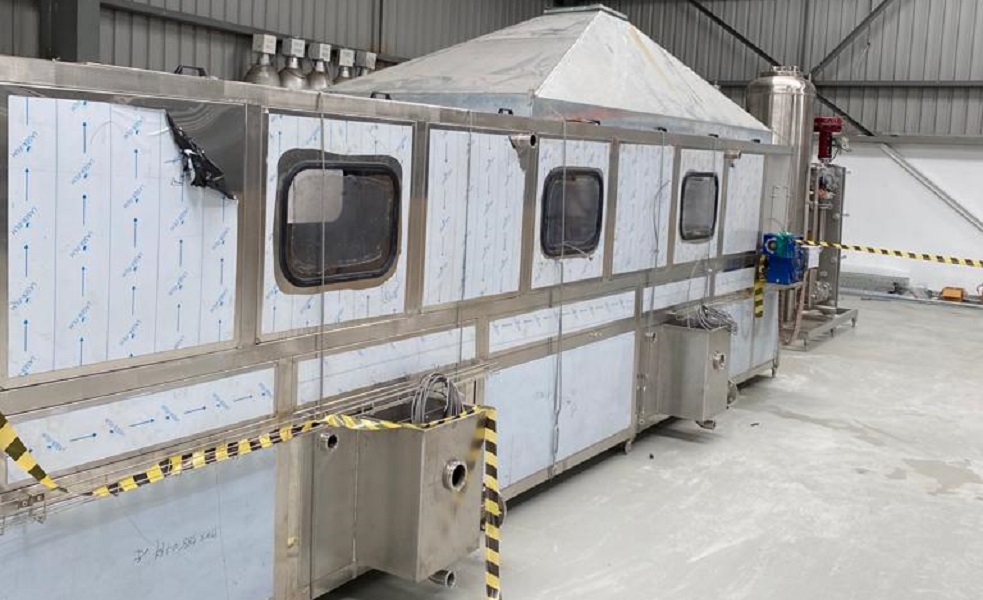Types of Machine Guards that Prevent Workplace Injuries
- Written by Darren Pay & Justin Oakes

Using machinery at the workplace significantly lessens the load on human labour. However, studies show that most workplace injuries are caused by unguarded machinery.
If a machine isn't securely guarded, it could harm your employee and cause serious injuries such as amputations, crushed body parts, blindness, burns, etc. Ignoring or failing to do so, goes against the Occupational Safety and Health Administration (OSHA) standards, which advises employers to guard machinery.
To prevent these injuries from occurring and to protect your employee's health, it is necessary to use proper guarding devices for your machinery.
5 Effective Machine Guarding Devices:
-
Barrier Guards:
The purpose of these guards is to prevent the employee's body parts from accessing any dangerous points in a machine. They are considered appropriate for part revolution and full revolution power press machinery.
Regulation- 29 CFR 1910.217
- Power Press barrier guards should prevent the employee's body from accessing the point of operation that could cause injuries
- It should not create pinch points between the moving machinery parts and the guard
- It shouldn't interfere with the inspection of the machine
- It should not be easy to remove
- It must provide full visibility of the place of operation and be uniform with other OSHA standards and specifications
- The guard must comply with the utmost permitted opening table.
-
Presence Sensing Devices (PSD):
This device automatically halts the machine strokes if there is an interference with the sensory field. It is commonly used for automated part revolution clutch power presses.
Regulation- 29 CFR 1910.217
- Presence sensing devices should protect the employee by stopping the power press's normal strokes if their body part is unintentionally near the place of operation. It should also be connected to the control circuit, to allow the slide motion to prevent the continuation of the downstroke in case the employee's hand is inside the sensory field.
- Presence sensing devices are not appropriate for machinery having full revolution clutches.
- Presence sensing devices can't be used to begin slide motion.
- All entry points leading to the place of operation that isn't secured with presence sensing devices should be protected with guards
- Bypassing or muting the PSD when the press slide upstrokes are permissible for feeding, circuit checking, and part ejection
- The length from the sensory field to the place of operation should be more than the space set by the distance safety standard
- If there is a failure in the system, the presence sensing device should be set up to prevent the beginning of the next action till the failure is fixed, allowing normal stoppage when needed.
-
Pullbacks/Restraints:
Pullbacks- They are designed to pull the operator's hand away from the place of operation, to prevent injuries and are commonly used for part and full revolution power presses.
Regulation- 29 CFR 1910.217
- If more than one operator is using the press, a separate pullback device should be given
- Regular inspections should be conducted and accurately recorded
- Before using the press, all devices should be inspected and any necessary repairs should be done before the use of the machine
- The attachment should be operated by the upper die or slide press.
- It should be accurately adjusted to withdraw the employee's hand before the dies shut
Restraints- They are similar to pullback devices and adjusted according to the type and size of the press.
Regulation- 29 CFR 1910.217
- It should include attachments for both the hands of the operators and should prevent them from accidentally reaching the place of operation
- Every attachment should be adjusted and safely anchored. Every operator working at the press is required to have a separate set
-
Two-hand Controls/Two-hand Trip:
Two-hand Controls- This guard is used for part revolution clutch presses.
Regulation- 29 CFR 1910.217
- Each operator working the machine should have a separate connected two-hand control device to complete a stroke. Removing the hand from the control halts the slide
- Every two-hand control should comply with the standards of paragraph 29 CFR 1910.217 (b) (7) (v)
- Gap between the device and the place of operation should be more than the distance safety standard
- This device should be securely fixed, only permitting a safety engineer supervisor to relocate it.
Two-hand Trip- This guard is used for full revolution clutch presses.
Regulation- 29 CFR 1910.217
- This device should be fixed securely, only permitting a safety engineer supervisor to relocate it.
- The safety gap between this device and the place of operation should be more than the distance safety standard
- If used on a machine needing two operators, each device provided per operator should activate the slide only with synchronized application from both employees
-
"A" and "B" Gates:
Type 'A' Gates- These types of barriers protect your employee during a full machine stroke, meaning the gate will only open after complete rotation. It is recommended to use them for full revolution clutch presses.
Type 'B' Gates- These barriers only protect the employee during the downstroke. The gate will open before a completed rotation.
Regulation- 29 CFR 1910.217, 29 CFR 1910.212
- The guard should comply with the required standards
- Both guards should prevent the operator's body part from accessing the place of operation
In conclusion, depending on the type of machinery you operate, you can use any of these safety guards to protect the health of your employee. Click here if you are looking for safety management system Australia.
About the Author:
Darren Pay & Justin Oakes are the co-founders of A1 Windscreen in Australia, well-known for its efficient machine guarding safety barriers and safety machine guarding replacements.









